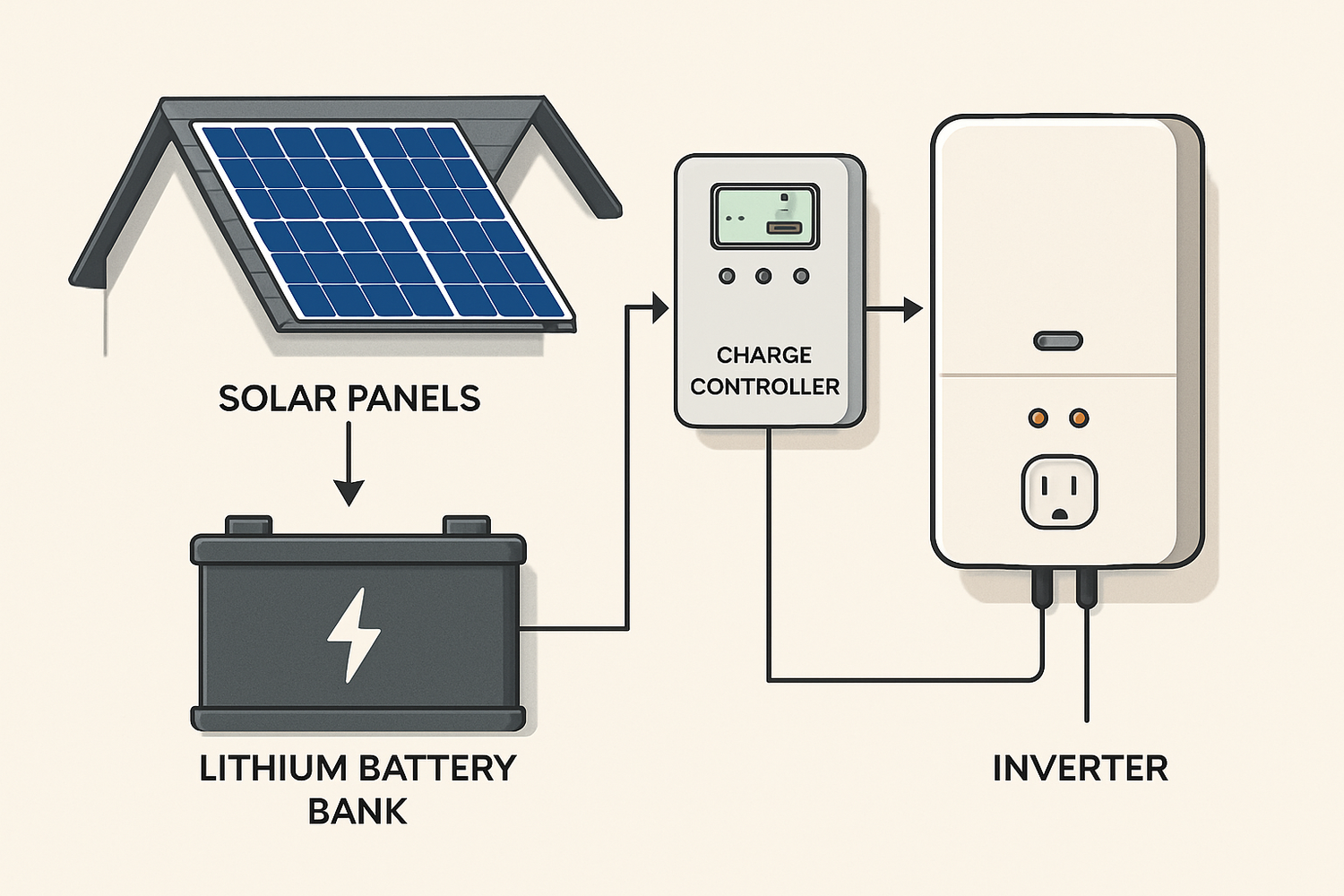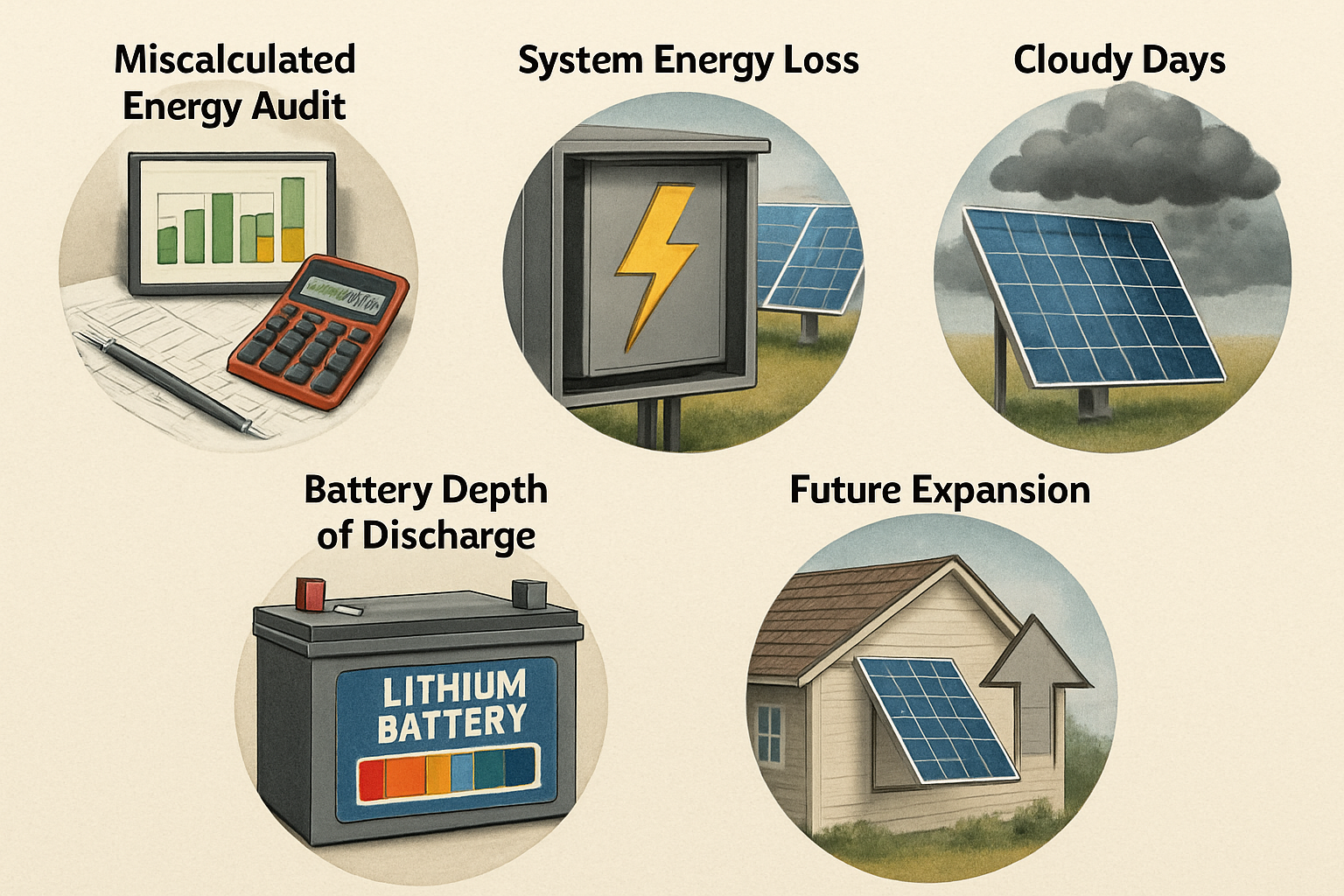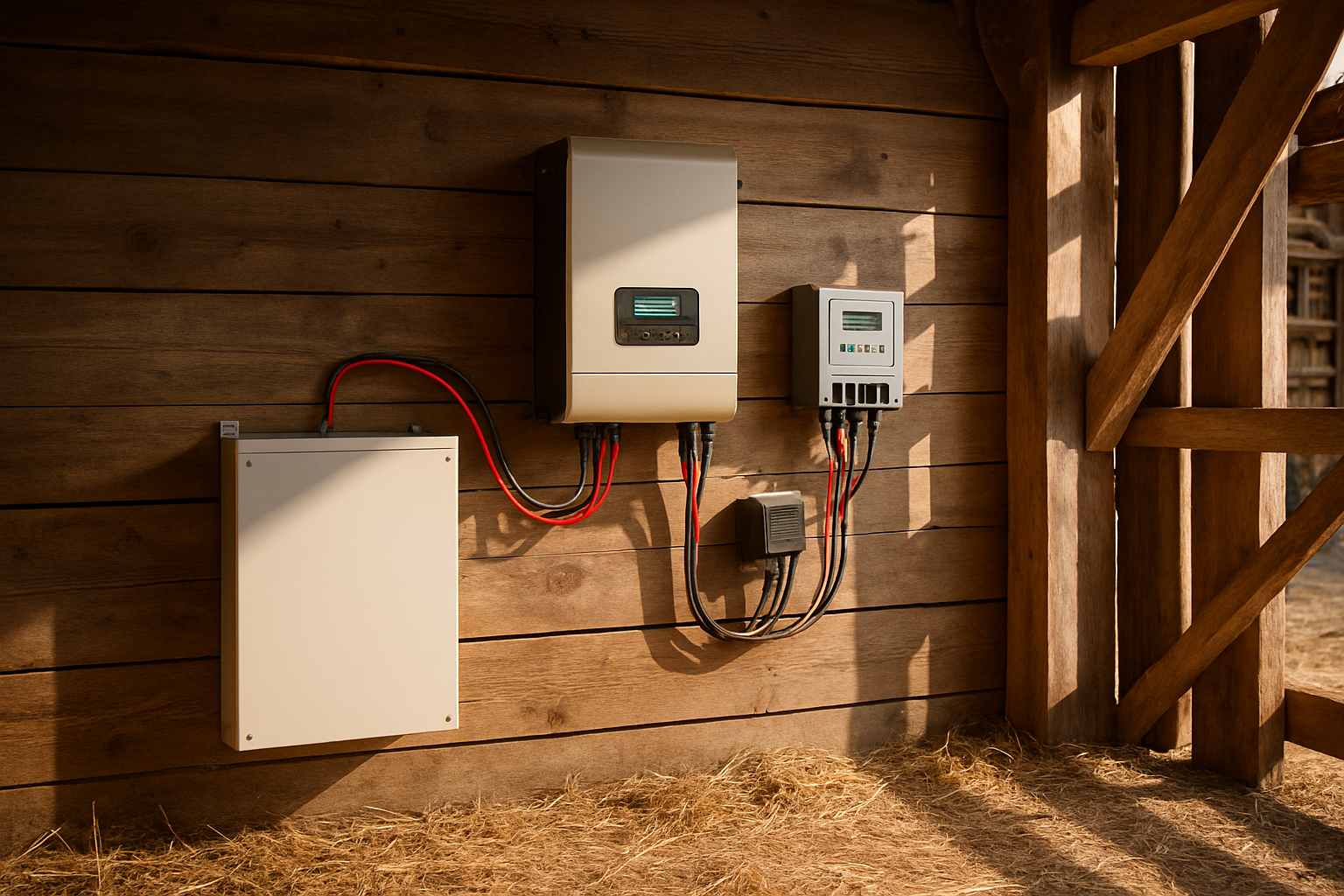Achieving energy independence is a primary motivation for switching to solar power. An off-grid solar system allows you to generate and store your own electricity, providing reliable power for homes, farms, or remote cabins entirely separate from the public utility grid. Understanding the individual parts of an off-grid solar system is the first step toward building a dependable and efficient power solution. Each component has a specific job, and they all work together to deliver clean energy whenever you need it.
The Foundation: Solar Panels
Solar panels are the most visible part of any solar power system. They are responsible for the initial energy capture, converting sunlight directly into electricity. This process is the starting point for powering your entire off-grid setup.
How Solar Panels Work
Solar panels, or photovoltaic (PV) modules, contain solar cells made from semiconductor materials, usually silicon. When sunlight strikes these cells, it excites electrons, creating a direct current (DC) of electricity. This phenomenon is known as the photovoltaic effect. According to the U.S. Department of Energy, this technology is a cornerstone of the global transition to cleaner energy sources. The amount of DC electricity a panel produces depends on factors like its size, efficiency, and the intensity of the sunlight it receives.
Types of Solar Panels
There are three main types of solar panels available, each with distinct characteristics. Monocrystalline panels are known for their high efficiency and sleek black appearance. Polycrystalline panels are more budget-friendly but slightly less efficient. Thin-film panels are flexible and lightweight, suitable for specialized applications.
| Panel Type | Efficiency Range | Appearance | Cost |
|---|---|---|---|
| Monocrystalline | 15% - 23% | Uniform black | Higher |
| Polycrystalline | 13% - 20% | Blue, speckled | Lower |
| Thin-Film | 10% - 13% | Varies, often black | Varies |
Sizing Your Solar Array
Correctly sizing your solar array is critical for meeting your energy needs. You must consider your daily electricity consumption (measured in kilowatt-hours), the average number of peak sun hours in your location, and the wattage of the panels you choose. An undersized array will not generate enough power, while an oversized one results in unnecessary expense.
The Heart of the System: The Battery Bank
In an off-grid system, the battery bank is not just an accessory; it's the central energy reservoir. It stores the electricity generated by your solar panels during the day for use at night or on cloudy days, ensuring a continuous power supply.
Why You Need Energy Storage
Without a battery, your solar power would only be available when the sun is shining. A battery bank provides the stability and reliability needed for true energy independence. It allows you to power your life on your own terms, regardless of weather conditions or the time of day.
The Rise of Lithium Iron Phosphate (LiFePO4) Batteries
While traditional lead-acid batteries have been used for decades, Lithium Iron Phosphate (LiFePO4) technology has become the preferred choice for modern off-grid systems. LiFePO4 batteries offer a longer lifespan, higher efficiency, and can be discharged more deeply without damage compared to their lead-acid counterparts. They are also safer, with greater thermal stability, and require virtually no maintenance. Although the initial investment is higher, their extended cycle life makes them more cost-effective over time.
Key Battery Specifications
Understanding a few key terms is important when selecting a battery. Capacity, measured in Amp-hours (Ah), tells you how much energy the battery can store. Voltage (V) must be compatible with your system's design. Depth of Discharge (DoD) indicates how much of the battery's capacity can be used. LiFePO4 batteries often have a DoD of 80-100%, while lead-acid is typically limited to 50%. For a deeper look at these metrics, the Ultimate Reference for Solar Storage Performance provides a detailed analysis of how these factors influence battery longevity and overall system value.
The Brains: Charge Controllers and Inverters
If panels are the foundation and batteries are the heart, then the charge controller and inverter are the brains of the operation. These devices manage the flow of energy, ensuring all solar power system components work together safely and efficiently.
The Charge Controller's Crucial Role
A solar charge controller sits between the solar panels and the battery bank. Its primary function is to regulate the voltage and current coming from the panels to prevent the batteries from overcharging. This protection is vital for extending the life of your battery bank. It also prevents electricity from flowing back to the panels from the batteries at night.
PWM vs. MPPT Charge Controllers
There are two main types of charge controllers: Pulse Width Modulation (PWM) and Maximum Power Point Tracking (MPPT). PWM controllers are simpler and less expensive, but also less efficient. MPPT controllers use advanced technology to convert excess voltage into extra current, boosting efficiency by up to 30%, especially in cold weather or low-light conditions. For most systems, an MPPT controller is a worthwhile investment to maximize your energy harvest.
The Inverter: Converting Power for Your Home
The final key component is the inverter, which converts the DC electricity stored in your batteries into alternating current (AC) electricity. AC power is the standard used by most household appliances. There are two main types: modified sine wave and pure sine wave. Pure sine wave inverters produce a clean, high-quality power that is identical to grid electricity, making them safe for all electronics, including sensitive devices like laptops and medical equipment. Modified sine wave inverters are cheaper but can cause issues with certain appliances.
The Supporting Cast: Balance of System (BOS)
Beyond the four main components, several other parts are needed to complete your off-grid solar kit. These are collectively known as the Balance of System (BOS).
Mounting Racks and Hardware
Mounting hardware is what physically secures your solar panels to your roof, the ground, or a pole. A sturdy, well-installed racking system is essential to protect your panels from wind, snow, and other environmental factors.
Wiring, Fuses, and Disconnects
Proper wiring, fuses, and safety disconnects are non-negotiable for a safe and reliable system. These components protect your equipment from overcurrents and allow you to safely de-energize parts of the system for maintenance. Using the correct size and type of wire minimizes energy loss and prevents potential hazards.
Bringing Your System to Life
Each of these off-grid solar system components plays an indispensable role. The solar panels generate power, the charge controller protects the battery, the battery stores the energy, and the inverter makes it usable for your daily needs. The growth in solar adoption reflects its increasing viability, with the U.S. Energy Information Administration (EIA) forecasting that solar will account for a growing share of electricity generation. By selecting high-quality, compatible components, you can build a robust and scalable energy solution that provides power for years to come. This synergy is what enables true energy independence.
Frequently Asked Questions
What are the 4 main components of an off-grid solar system?
The four primary components are solar panels, a charge controller, a battery bank, and an inverter. These work in concert to generate, regulate, store, and convert electricity for your use.
How long do off-grid solar components last?
Lifespans vary by component and quality. Solar panels typically come with a 25-year performance warranty. High-quality LiFePO4 batteries can last for over a decade or 5,000+ cycles. Inverters and charge controllers generally have a lifespan of 5 to 15 years.
Can I build an off-grid solar system myself?
Many individuals successfully install their own smaller off-grid systems for cabins or RVs. However, for larger residential systems, consulting with a professional is highly recommended to ensure safety, proper sizing, and compliance with any local codes. Incorrect installation can be hazardous and inefficient.
What is the difference between an off-grid and on-grid system?
An off-grid system is completely self-sufficient and does not connect to the utility grid, relying on batteries for energy storage. An on-grid (or grid-tied) system is connected to the utility grid. It can draw power from the grid when solar production is low and, in some cases, send excess power back to the grid.





Leave a comment
All comments are moderated before being published.
This site is protected by hCaptcha and the hCaptcha Privacy Policy and Terms of Service apply.